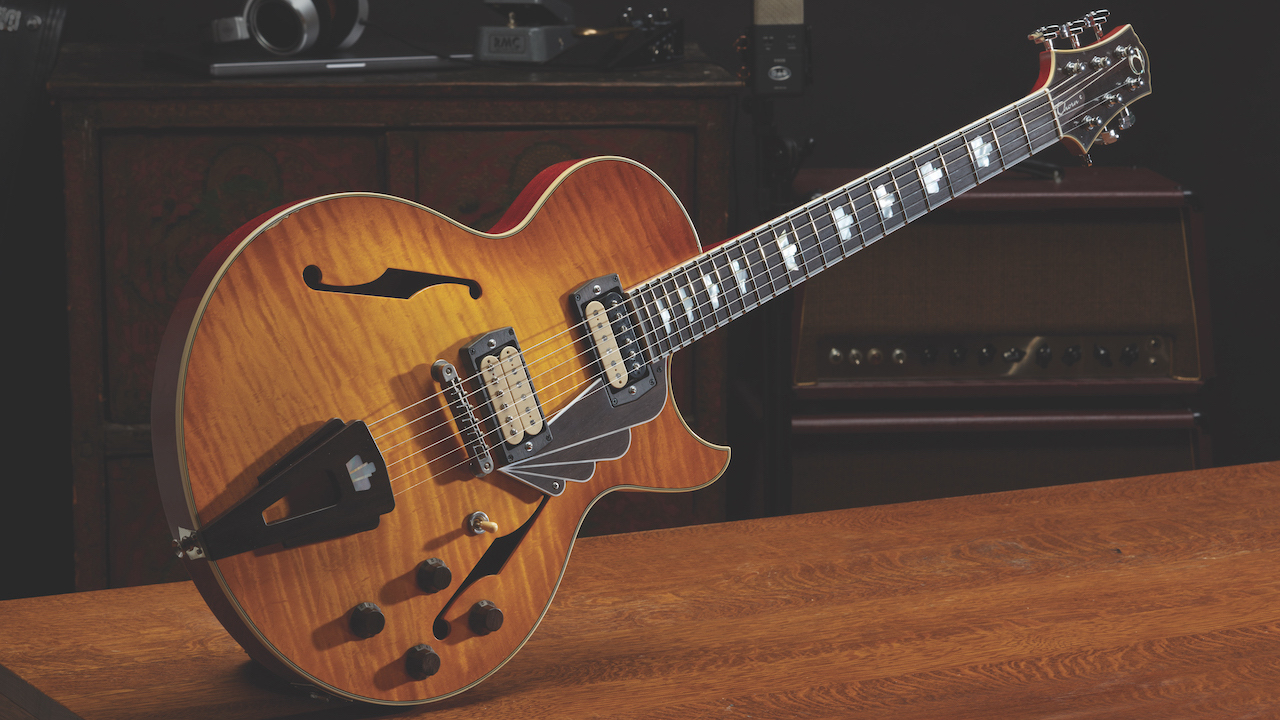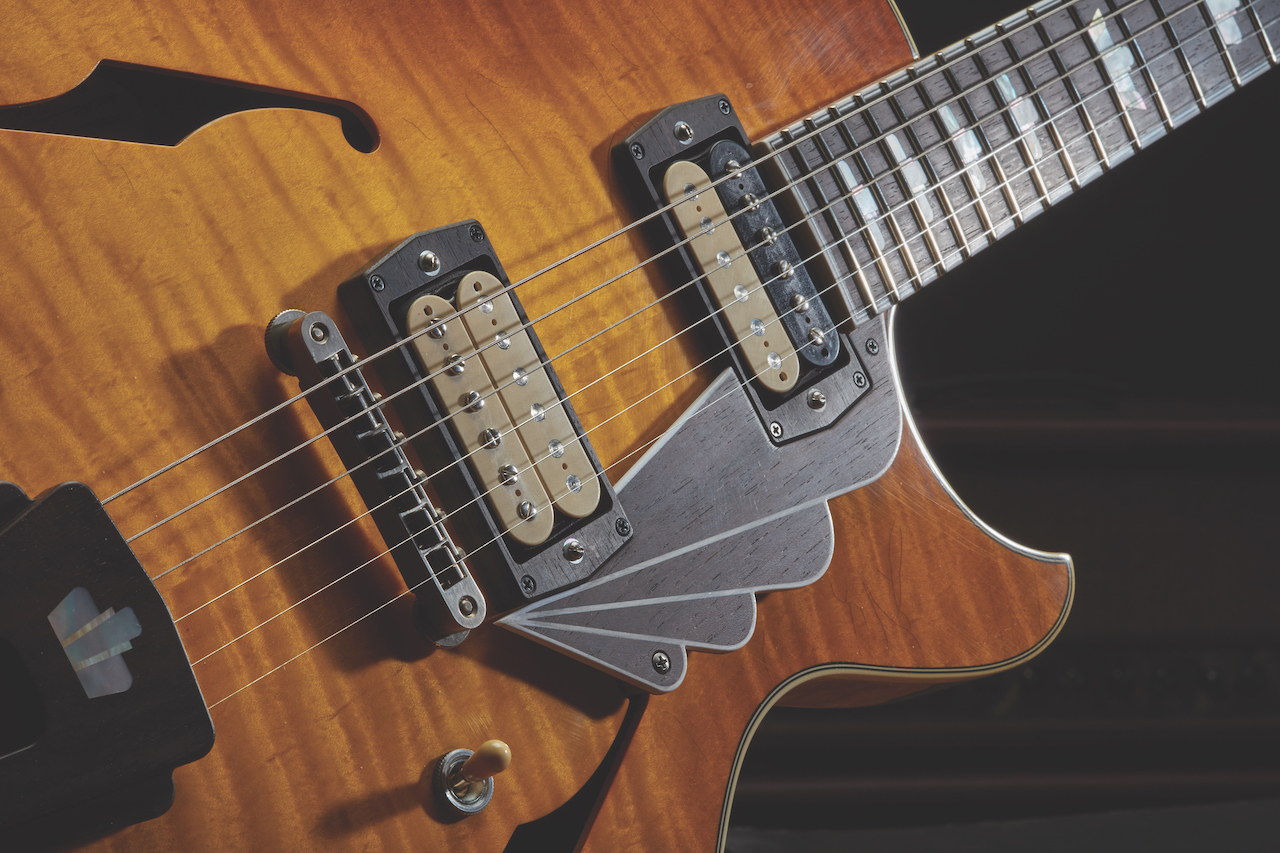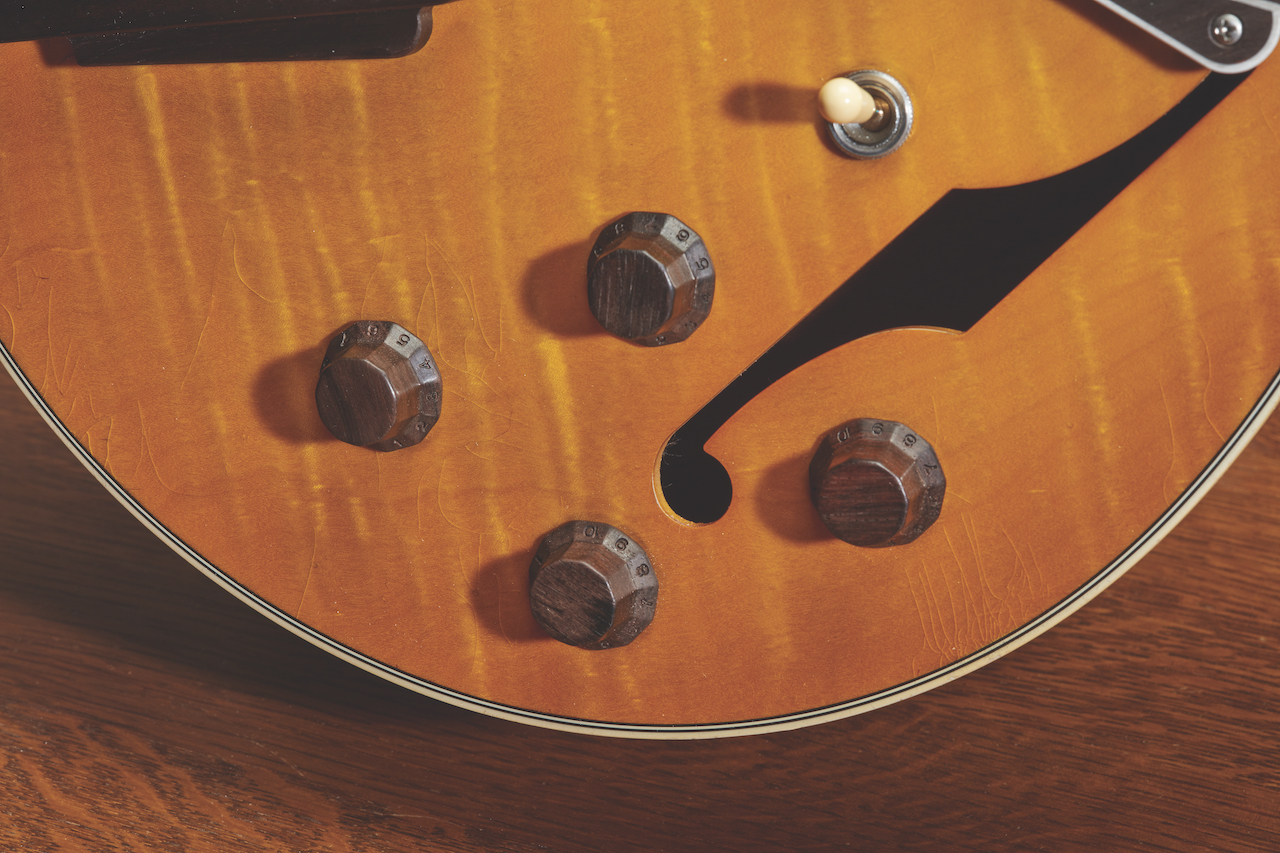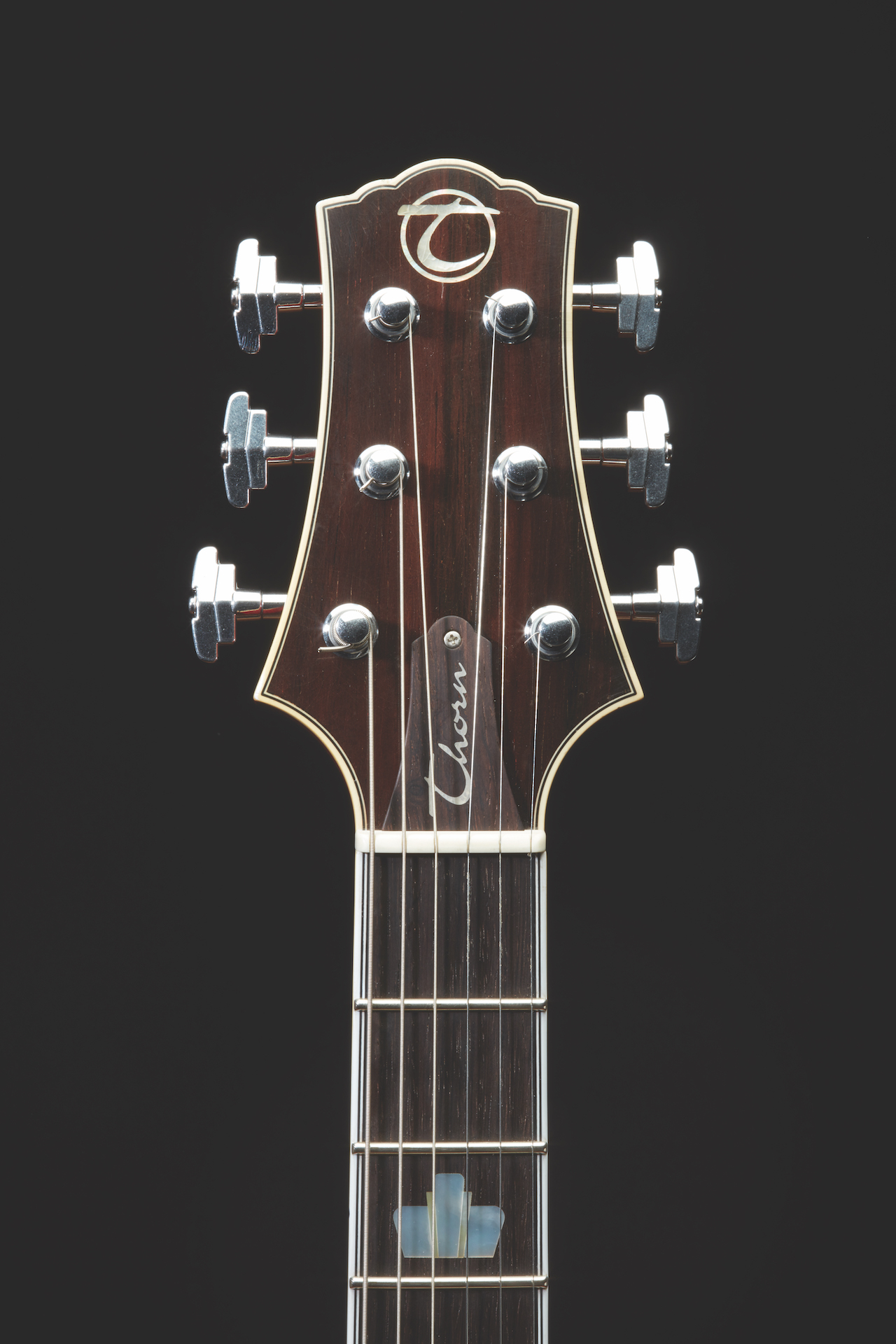“Anyone who has laid hands on one of his guitars – before, during, or after Fender – will understand that Ron Thorn crafts guitars to within an iota of perfection”: Any way you choose to look at it, the Florentine Empirial is a stunner
This creation from the Fender Custom Shop’s former principal master builder looks fantastic, and utterly refuses to put any limits on whatever you intend to do with it

Ask California guitar maker Ron Thorn how it feels to have departed the world-renowned Fender Custom Shop to make guitars on his own again, and he doesn’t beat around the bush.
“I’m back to doing what I love!” Thorn declares. “Building guitars completely from scratch, where I’ve made all the design choices, selected every board, chiseled every binding corner, soldered every joint. I didn’t realize just how much I missed that until diving back into it refreshingly revitalized my passion for guitar building.”
Just one look at the new Thorn Florentine Empirial reveals how that renewed passion has translated into a next-level, master-grade electric guitar. To catch the general drift, you might call it the love child of a ’59 Les Paul and golden-era D’Angelico New Yorker, conceived on a night when a 1942 Epiphone Emperor and a 1960 Gibson Byrdland were tangling in the room above.
That said, we can equally look to two of Thorn’s more exalted pre-Fender models, the Artisan Florentine solidbody and Grantura semi-acoustic, to probe the roots of this stellar new creation. Either way you choose to look at it, the Florentine Empirial is a stunner.
Thorn’s history with the Fender Musical Instrument Corporation extends through three decades. He was the Fender Custom Shop’s sole supplier of custom inlay work from the mid ’90s on, while earning a reputation as a highly respected custom-guitar maker in his own right. In 2018, FCS hired Thorn outright as a principal master builder, and he was named director of the Custom Shop a short time later.
Anyone who has laid hands on one of his guitars – before, during, or after Fender – will understand that Ron Thorn doesn’t just make guitars; he crafts them to within an iota of perfection. Having played several in the past, and even owned a couple, I can attest that I have rarely been more impressed by the merging of talent, passion, and innovation than by what I’ve found in his work.

A quick look at Thorn’s history suggests it might just be in his blood. His grandfather and two uncles were finish carpenters, and his father was an armorer for the Royal Canadian Navy who kept a master-grade woodworking shop in the garage.
Get The Pick Newsletter
All the latest guitar news, interviews, lessons, reviews, deals and more, direct to your inbox!
Dad’s job took the family to Burbank, California, in 1979, when Thorn was 10, and his own drive to craft things of wood and metal converged with the California music scene at the height of Eddie Van Halen’s fame. A master luthier was born, and we might say his ultimate expression of the art has coalesced in guitars like this Florentine Empirial 45 years later.
Fundamentals of the model include a 14 ½–inch wide, 2 ¼–inch thick semihollow body made from mahogany, with a solid, arched flame-maple top and a mahogany neck with a complex glued-in dovetail joint (options include a solid spruce top and korina body and neck). It’s built to a 24.65-inch scale length, with a 10-degree headstock angle, a 12-inch fingerboard radius, and a width of 1.687 inches at the nut.
The fingerboard on this example is made from the optional Brazilian rosewood and shares its highly decorative multi-ply binding and white-and-gold mother-of-pearl inlays with the headstock. Further Brazilian rosewood appointments include custom deco knobs, pickup bezels, headstock facing, a trapeze tailpiece, and a truss-rod cover with a hand-cut sterling silver “Thorn” inlay, all made by Thorn himself (ebony features are otherwise standard in these positions).

It all positively glows alongside the top’s faded cherry sunburst finish in thin nitrocellulose lacquer, hand-aged to place it within the era of its inspiration. And for the builder himself, what exactly was that inspiration?
“That came from my first trip to New York, a few years back,” Thorn tells us. “The vibe, the people… the pizzas. It was all incredible. But what really struck me was the architecture. The heavy use of art deco had me enthralled. I was taking pictures of doorways and window details, lamps and even an elevator’s floor-indicator frame. Deco was everywhere – sometimes subtle, sometimes very apparent, such as in the Chrysler and Empire State buildings – but always beautiful.
“Couple that with spending a few hours in Rudy’s Music checking out their collection of guitars built by the masters, and saying I was inspired is putting it lightly. I felt compelled to design a model representing this experience. The following day, I spent the entire five-hour flight back to Los Angeles drawing and detailing the Empirial.”

As stunning as those details are, several aspects of the guitar’s build that you don’t see are equally impressive.
Asked to highlight a few of the instrument’s under-the-hood features, Thorn points to the massive amount of neck/body contact that’s produced by his dovetail joint; the ingenious method of supporting the pickguard through the f-hole with an internal bracket cantilevered off the partial center block; the mid ’50s–style single-action truss rod in a straight, yet inclined channel; the tag board under the bridge pickup for easy pickup swaps without having to extract the entire wiring harness through the pickup cavities; the metal-reinforced jack plate… And the list goes on.
As for pickup swaps, I suspect few players will likely want to change out the stock units, a set of four-conductor Ron Ellis Signature humbuckers made to the PAF formula by one of the most respected pickup winders working today. They connect to a wiring harness comprising Bourns pots, NOS Soviet-era paper-in-oil .033µF tone capacitors, and a six-position Free-Way switch disguised as a traditional three-way toggle, for coil-splitting options. A Faber ABR-1 bridge and Grover Imperial tuners complete the hardware set.
In the hand, the guitar plays flawlessly. The immaculately dressed frets with blind slot ends, a sublimely shaped ’59 “C” neck carve, and a back ribcage comfort contour don’t hurt at all here.
It all proves wonderfully expressive into either a tweed Deluxe–style 1x12 combo, a 65amps London head and 2x12 cab, or a wide variety of presets on the Fractal FM9. Given some dirt via a cranked amp or overdrive pedal, this elegant guitar rocks with gusto, and in a way that belies its outwardly refined appearance, although it also displays nuanced dynamics, articulation, and a controllable playability you don’t find in many humbucker-equipped guitars.

On cleaner settings, the Florentine Empirial’s subtler shades shine through, heard in ringing, blooming upper-harmonic overtones, and a buoyant richness and depth that never clouds its inherent clarity. Adding to the Ellis pickups’ native humbucker girth, the six-position Free-Way switch taps shimmering single-coil tones that broaden this instrument's capabilities exponentially. The Florentine Empirial quickly proves itself a guitar that not only looks fantastic but also utterly refuses to put any limits on whatever you intend to do with it.
Thorn concurs. “Of all the guitars I’ve built in my career, I feel the semihollows have always stood out as being extra-special sounding to me,” he explains. “The wider spectral tonal range, the ability to react to the varying dynamics of playing and the sheer versatility of musical styles that they work so well with have always felt to me like the characteristics of a really fine instrument.”
In the Florentine Empirial’s case, “really fine” is a major understatement, but such is this luthier’s modesty. Then again, it really is difficult to find words adequate to express the achievement this guitar represents.
- Priced at $12,950 from Thorn Guitars.
Dave Hunter is a writer and consulting editor for Guitar Player magazine. His prolific output as author includes Fender 75 Years, The Guitar Amp Handbook, The British Amp Invasion, Ultimate Star Guitars, Guitar Effects Pedals, The Guitar Pickup Handbook, The Fender Telecaster and several other titles. Hunter is a former editor of The Guitar Magazine (UK), and a contributor to Vintage Guitar, Premier Guitar, The Connoisseur and other publications. A contributing essayist to the United States Library of Congress National Recording Preservation Board’s Permanent Archive, he lives in Kittery, ME, with his wife and their two children and fronts the bands A Different Engine and The Stereo Field.
"We tried every guitar for weeks, and nothing would fit. And then, one day, we pulled this out." Mike Campbell on his "Red Dog" Telecaster, the guitar behind Tom Petty & the Heartbreakers' "Refugee" and the focus of two new Fender tribute models
“A good example of how, as artists, you have to blindly move forward with crazy ideas”: The story of Joe Satriani’s showstopping Crystal Planet Ibanez JS prototype – which has just sold for $10,000











